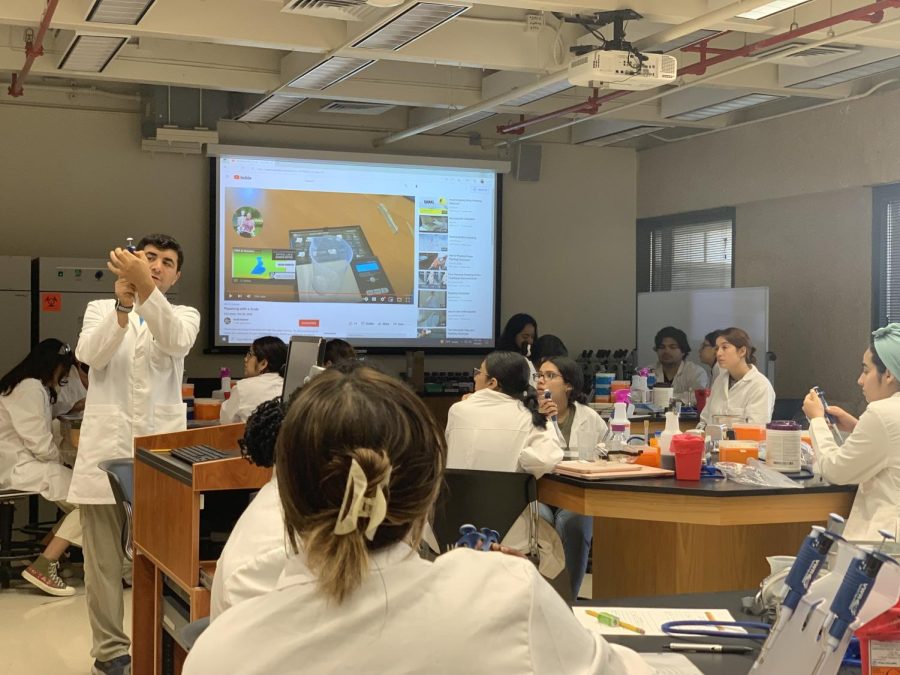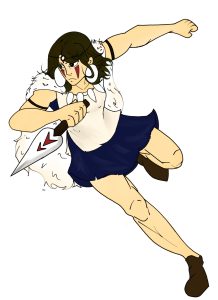New science class investigates the medicinal properties of honey
Dr. Ozturk provides a demonstration as the class watches.
November 22, 2022
This semester, the Department of Integrative Biology offered a class titled “Medicinal Properties of Honey” as part of UTSA’s Sophomore Biology Research Initiative. Taught by Dr. Ferhat Ozturk, the class is one of the five classes available to students interested in research. The year-long course aims to acquaint students with honey and beekeeping and to provide them with the opportunity to “identify the bioactivity potential of local honeys through chemical and biological analyses in the lab,” according to the official website of the Sophomore Research Initiative.
Ozturk first developed an interest in honey and its role in wound healing while working at a local university in Turkey and has worked with the substance for the past 10 years.
“My main purpose was going into cancer research [and to] study honey on the side. But then I embraced honey more than anything else,” Ozturk said.
The first and current semester of the course is focused on studying the antimicrobial properties of honey. So far, this involved testing several different samples of honey to analyze the effect each sample had on microbial growth. This effect can be observed by measuring the zone of inhibition on a Petri dish.
“[The class] grew Staph Aureus … and then we put [100 microliters of] honey into the Petri dishes [by making wells]… and we measured how much honey is inhibiting the growth of Staph Aureus,” Ozturk said. “If the inhibition [zone] is more than three [millimeters], that bacteria [are] sensitive to honey. We found out more than 60% of the honey [samples had the] potential to kill the staph infection.”
“I’m still analyzing [the] results, but I’m very positive that these are very promising results that a good number of honey [samples] from San Antonio and all over Texas can be used as an antimicrobial agent for different diseases, especially for topical wounds which [are infected],” Ozturk added.
As part of their research activities, Ozturk’s students are also working on drafting grant proposals for submission to the National Science Foundation (NSF) graduate program.
“This is very advantageous for [students] because they learn how to write grants,” Ozturk said. “[And students also have the opportunity to] get their own scholarship from the [NSF] if their project is approved. And this is a great opportunity.”
Along with spending time in the lab and conducting hands-on experiments, Ozturk conducts lectures where students can learn more about honey. The class also has the opportunity to hear from guest speakers.
During the spring semester, students in the course will continue studying honey, although the focus of the class will shift to studying honey’s antioxidant and anti-inflammatory properties. At the end of the course, students are expected to analyze all the data they have collected throughout the fall and spring semesters and use it to write an article.
“They will go through the studies that they have done — antimicrobial, antioxidant and anti-inflammatory properties of honey [as well as other properties] … and they will write an article — a manuscript about [it],” Ozturk said. “Then they will submit it to a journal, [and the article] will go through a peer review, and they will also learn about the process of writing a manuscript, submitting it, reviewing it and then resubmitting it.”
Ozturk also looks after the beehives on campus and hopes to incorporate beekeeping into the class next semester.
The “Medicinal Properties of Honey” class is expected to be offered again next year, and more information about the class and the Sophomore Research Initiative can be found at https://www.utsa.edu/sciences/integrative-biology/sbri.html









